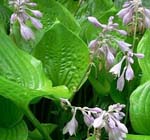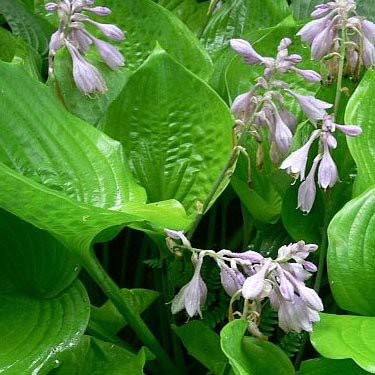Alan Titchmarsh on hostas
The colour and character hostas bring to the garden is wonderful, says Alan Titchmarsh


** If you want to buy any of the plants mentioned below for your own garden, visit www.countrylife.co.uk/nursery
and type or copy and paste the name into the search. Plants are
delivered in sturdy boxes in a matter of days from one of the finest
nurseries in the country. **
I am devoted to hostas. Oh yes, I know that they're martyrs to slugs and-in our garden overlying chalky soil to Cornu aspersum (the garden snail). But precautions can be taken to minimise damage, especially in spring when the unfurling buds are at their most vulnerable. I gave up using slug pellets long ago, as they are injurious to both hedgehogs and thrushes, and because I prefer to avoid using any chemicals in my garden as the wildlife is every bit as important as the plants. There is also one other reason, seldom alluded to: if slug pellets are so effective, why do we keep having to use them?
Having experimented with everything from crushed eggshells and holly leaves (not especially effective) to very sharp grit (marginally better), my preferred method of controlling molluscs is to surround the hostas growing in the ground with stiff copper collars (scrubbed clean annually) just before the shoots start to fatten up and emerge. They have the appearance of those stiff clerical collars worn by the Victorian Church of England clergy and clip together to form a continuous circle whose base is pushed into the ground. Where hostas are grown in pots, copper tape can be stuck around the rim to effect some sort of deterrent.
As to the plants themselves, rich, moist soil produces the best specimens, but hostas are surprisingly accommodating once established, growing reasonably well even in relatively dry earth. What's more, they thrive on a lack of disturbance, growing larger year on year if left entirely to their own devices. All my clumps are more than 10 years old. Unlike many other border plants, they don't spread outwards at the expense of their centres to form an ever-widening circle that's dead in the middle.
Exquisite houses, the beauty of Nature, and how to get the most from your life, straight to your inbox.
I love hostas in pots and tubs-year on year they bulk up, in spite of the restrictions imposed by the container (mine are between 15in and 18in in diameter)-and, provided they are watered regularly and given a liquid feed every two or three weeks from May to September, they'll be blissfully happy. Let them dry out in a hot, sunny spot and they can scorch, but, provided their moisture supply is uninterrupted, they will cope. Dappled or heavy shade suits them well, although dry shade will offer them a challenge and in such a situation they will increase more slowly.

More and more varieties come on stream every year and enthusiasts can do their own ‘stamp collecting'. For me, many of the older varieties are still among the best. A fine clump of Hosta sieboldiana var. elegans takes some beating; the large, glaucous, blue-grey leaves seeming to be made of rubber. Spikes of white flowers emerge from among them in midsummer.
I quite like them when they're fresh, but I do remove them before they fade. Some would consider this sacrilege, but for me, it's the leaves of hostas that are the greatest attraction, rather than the tiered bells of flowers that seldom last so well. There are exceptions: Honey bells carries its white, la ven der-streaked flowers well clear of the foliage in spikes that are more elegant than the norm.
Flip through the catalogues of specialist growers for those variegations that appeal; for me, Francee (white edged), Frances Williams (green and greeny yellow with better-than-average slug resistance) and Gold Standard (green with a large yellow centre) are among the best, and Sum and Substance has the largest leaves of all at 18in from end to end in a shade of greeny yellow.
To recommend so few varieties leaves me feeling guilty, as, to be honest, there are few that I wouldn't grow. Modesty almost forbids that I should mention Alan Titchmarsh, but if I explain that this variety has a green leaf with a prominent yellow streak down the centre, you will, I hope, have sympathy. At least, it can claim to be striking.
* Follow
Country Life is unlike any other magazine: the only glossy weekly on the newsstand and the only magazine that has been guest-edited by His Majesty The King not once, but twice. It is a celebration of modern rural life and all its diverse joys and pleasures — that was first published in Queen Victoria's Diamond Jubilee year. Our eclectic mixture of witty and informative content — from the most up-to-date property news and commentary and a coveted glimpse inside some of the UK's best houses and gardens, to gardening, the arts and interior design, written by experts in their field — still cannot be found in print or online, anywhere else.
